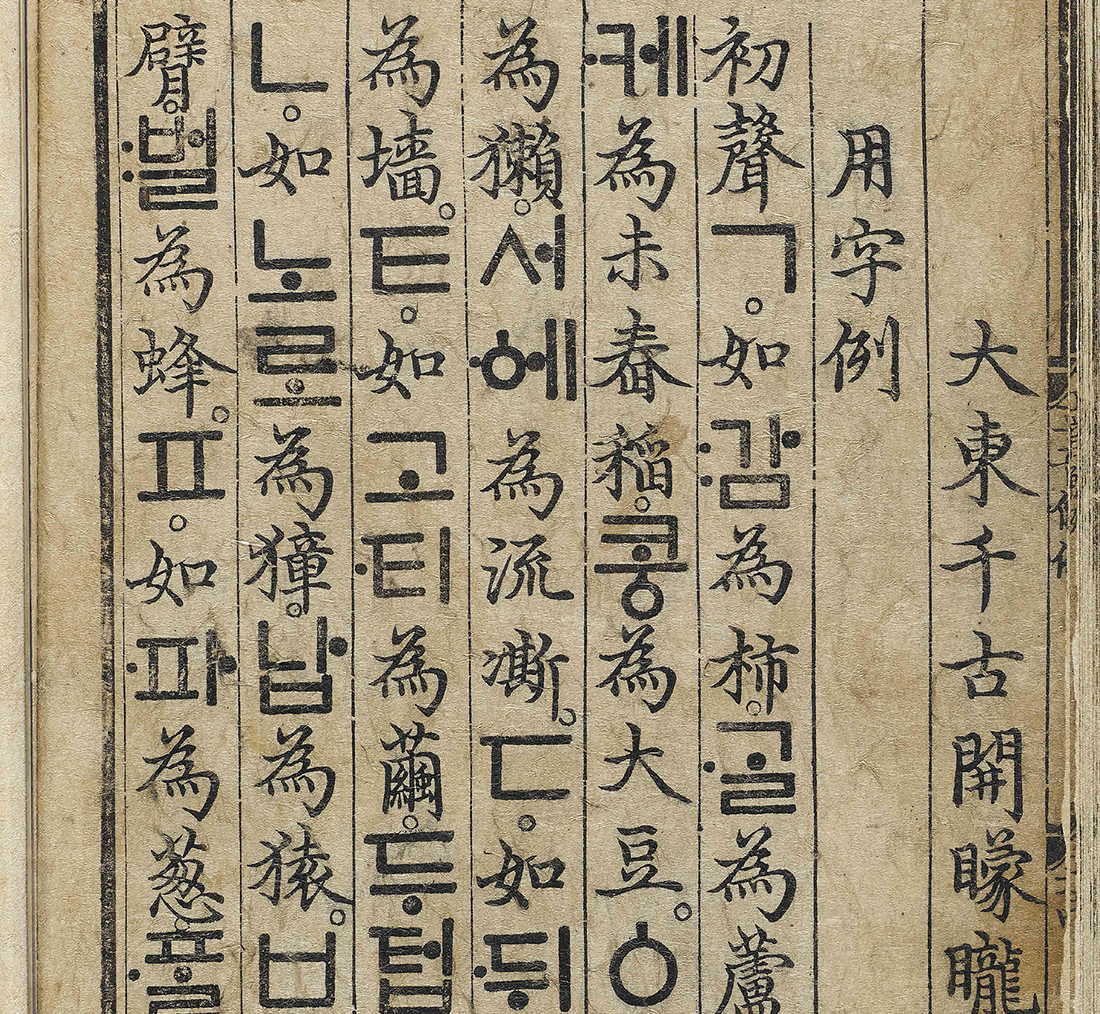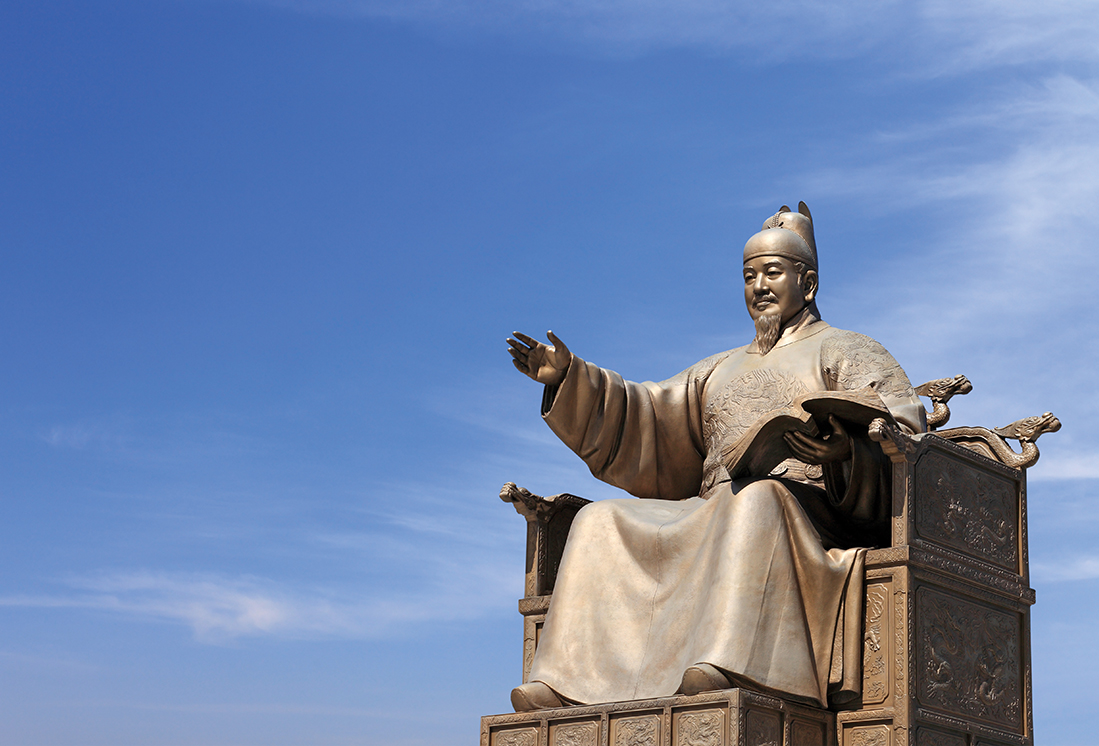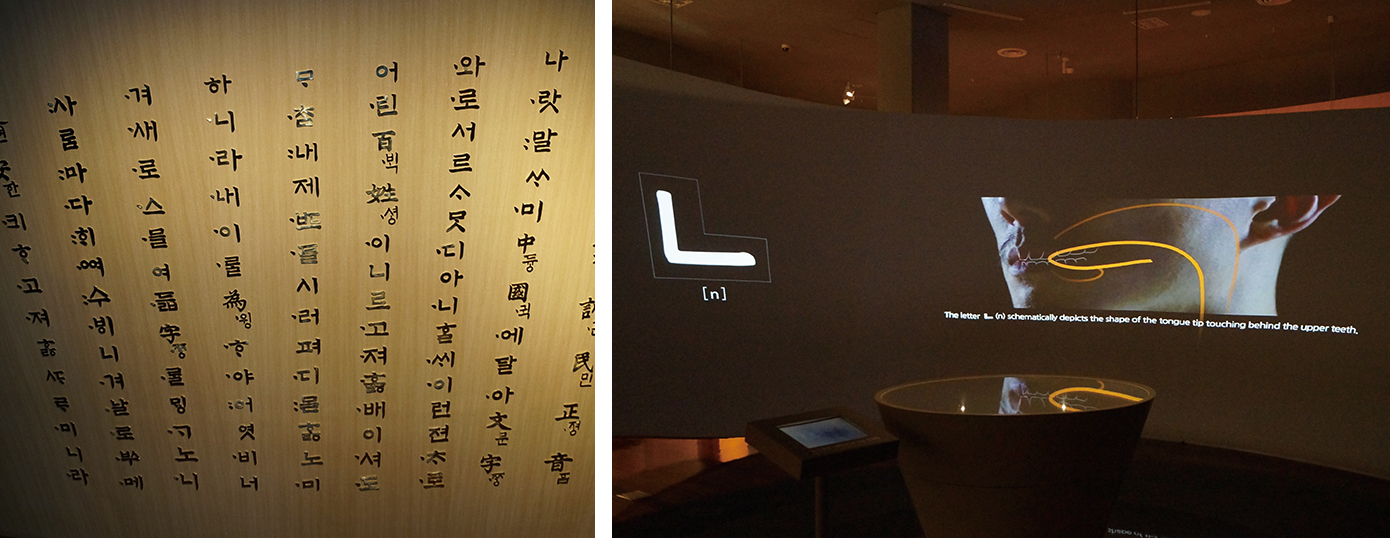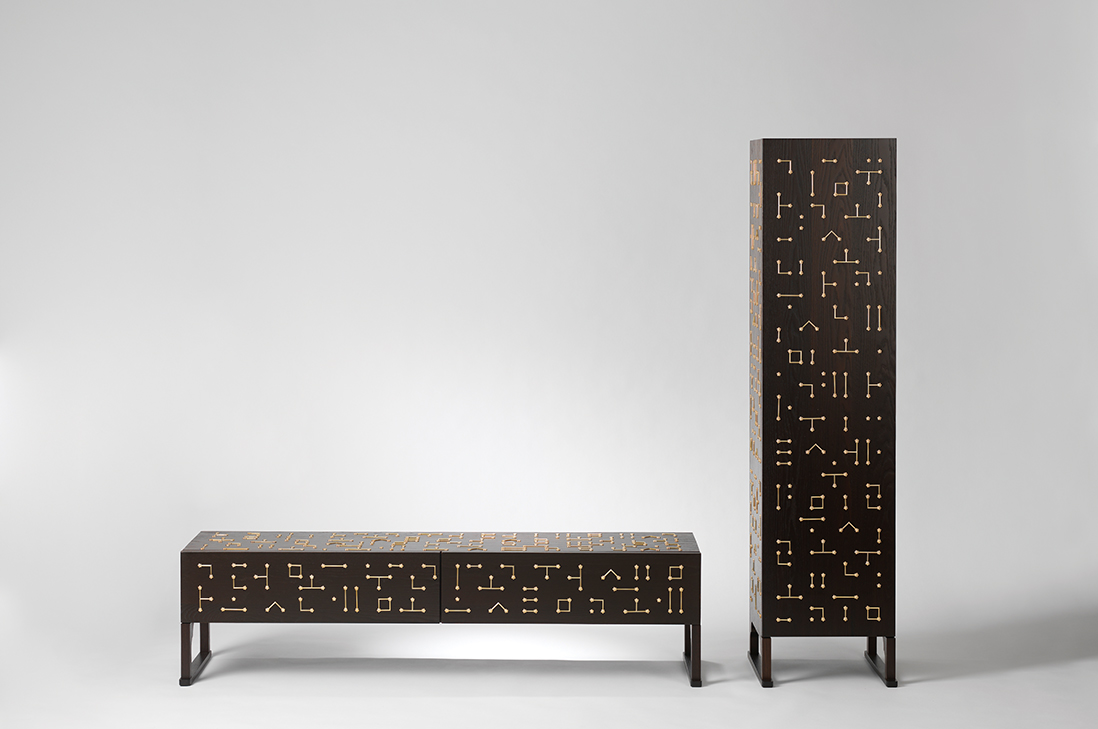STORY
More Than Letters
Stimulating Innovation
For nearly six centuries, Hangeul has acted as a contextual backdrop of Korean culture. As part of everyday life in Korea over that time, it has evolved in constantly variable ways. These days, contemporary design increasingly appeals to the esthetic and formative appeal of Hangeul in addition to its linguistic prowess. The Korean alphabet is increasingly being applied as figural elements, often integrated as objects rooted in daily life or cultural content like music, architecture, fashion, visual arts, crafts and textiles.
Written by• Kim Eun Jae ,
curator at National Hangeul Museum
Contrary to the conventional way other alphabets have evolved historically through multiple eras and usage by ethnic groups, Hangeul was systematically planned out by one individual.

© National Hangeul Museum
King Sejong the Innovative
In 1446, the release of the textbook Hunminjeongeum (Proper Sounds for the Instruction of the People) by King Sejong the Great marked the debut of Hangeul. He is said to have invented the alphabet three years prior but had it tested for another three years.
The work contains information on Hangeul’s conception, its inventor, when it was invented and based on what system. As the world’s lone surviving compilation recording the conception of a language, Hunminjeongeum is designated both Nat’l Treasure No. 70 in Korea and UNESCO World Heritage.
Perhaps the most astonishing of Sejong’s feats is his design thinking that remains relevant to this day. The king met the needs of his masses by creating a simple structure and an easily comprehensible system in both theory and appearance. In other words, Hangeul was from its outset planned and designed for maximal utility and ease of understanding.
It is precisely his pursuit of approachability and his ability to foresee user needs that is at the heart of design today. Esthetic impressions, functionality and purpose, and rationality of method are the core ideals of design. Questions of how to design and for whom are basic propositions from which all designers start their journey. This Hangeul-influenced approach allows exploration of the societal implications of design. Hangeul is thus living proof of the impact design values and creativity can have on the future.

The statue of King Sejong the Great at Seoul’s Gwanghwamun Square is a city landmark. © shutterstock
Sound-based Figures
The basic elements of Hangeul comprise five consonants and three vowels. Using these eight components, variations by adding lines or combining any of them through simple geometric constructions make the 28 units comprising the alphabet today.
The basic consonants ㄱ, ㄴ, ㅁ, ㅅ and ㅇ are based on principles of enunciation. ㄱ is in the shape of a tongue and molar blocking the throat that occurs when pronouncing it. Likewise, ㄴ is the form of a tongue touching the upper gums; ㅁ is a mouth, known also as “lip sounds” in enunciation; ㅅ is considered a tooth sound thus reflecting its shape; and ㅇ is a throat sound shaped like the round hole in the throats.
Moving onto vowels, · represents the round sky and is pronounced by puckering the tongue; ㅡ is the ground pronounced by puckering the tongue a tad bit; and ㅣ represents a standing person and is pronounced by straightening the tongue without any fold.
Hangeul is a visual enactment of enunciation analysis and this is why it clearly sets apart consonants from vowels. Each letter contains a discrete syllable to enunciate that is built on a solid set of organizing principles.

Part of the National Hangeul Museum’s permanent exhibition hall displays Hangeul-related documents and artwork under the theme “The Journey That Hangeul Went Through.” © shutterstock
Balanced, Logical & Well-structured
To design means to consciously and intuitively create sensible and meaningful sets of rules. In the case of Hangeul, it is inherently divergent from its precedents (hanja or Chinese script) or even other writing systems in the Eastern Hemisphere.
The formative elements of Hangeul, especially the transformational mechanism behind its dot, line and circle elements, are based on rational relationships between these basic units. Each unit is assembled in an orderly and perfectly symmetrical manner, like perpendicularity (lines) or augmentation (dot-based features).
The geometric nature of Hangeul allows visual variations of the alphabet. This feature is thanks to the imagistic advantages or flexibility of Hangeul design. Hangeul is thus inherently more conducive to a variety of visual creations than the Roman alphabet.
A written language’s letters form the foundation of a communal spirit shared by a people or ethnic group, as well as cultural identity. As the basis for Korean culture, Hangeul is as relevant today as it was six centuries ago as ever-evolving intangible heritage.

Furniture designer Kwak Chul-an integrates calligraphy and brushstroke-inspired formations in his creations. © National Hangeul Museum

Ha Jihoon’s series of furniture is decorated with renderings of Hangeul vowels and consonants. © Ha Jihoon



















